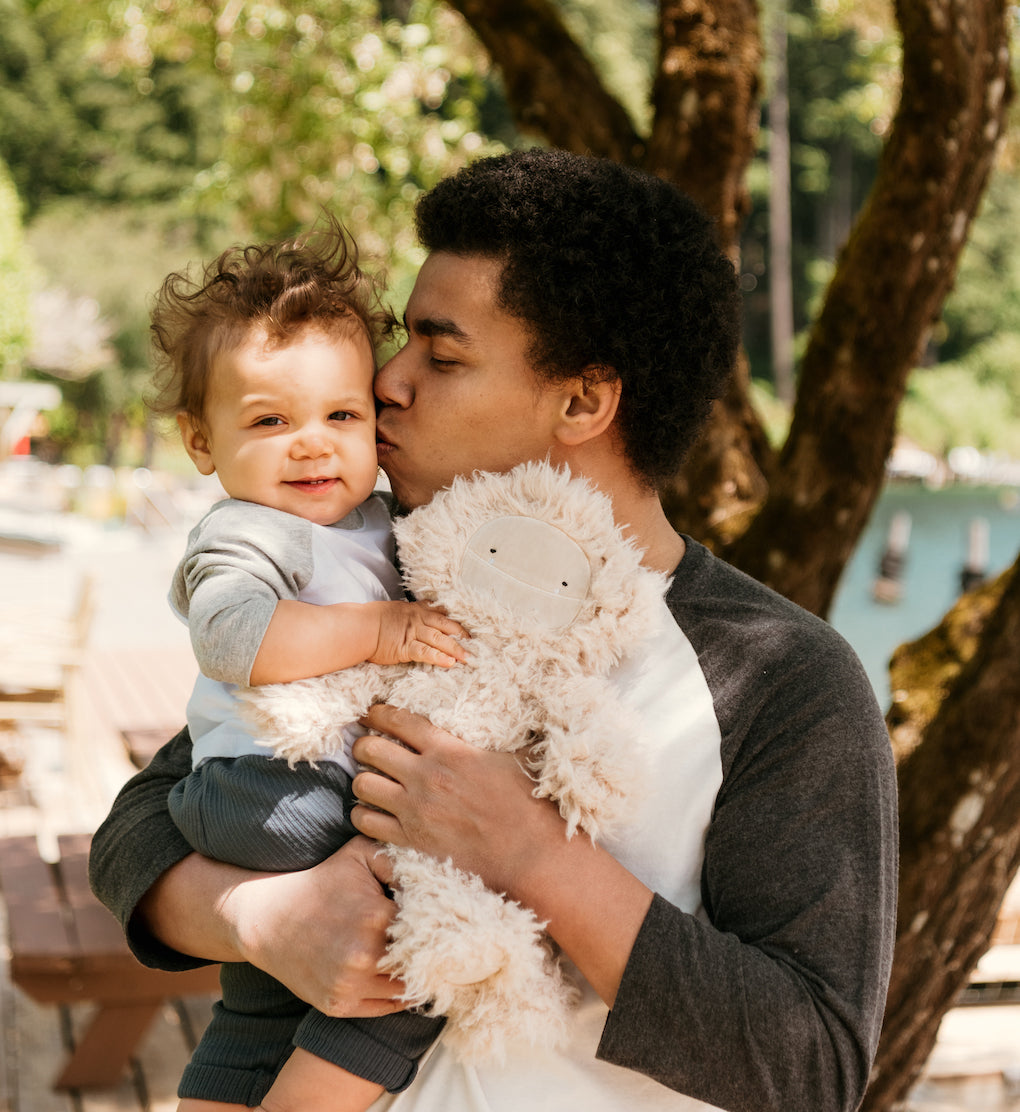We all want our children to feel self-confident, but what can caregivers do to help children feel good about themselves? Well, it turns out, one of the biggest things caregivers can do, is provide their child with the opportunity to build a secure attachment. “Attachment” refers to the relationship a child has with their primary caregiver. When an attachment is healthy (or secure), this bond can help a child feel safe even when they are out exploring the world away from the caregiver. The cool thing about attachment is that a child can actually internalize the feeling of safety and security that the parent offers them, so they can carry those feelings with them wherever they go. This is their “inner working model” of the parent. This means that we literally carry around our loved ones in our bodies, minds, and hearts, even when we are away from one another.
How does ‘secure attachment’ lead to self-confidence?
‘Secure attachment’ is when a child feels a sense of trust that their caregiver will respond to their needs and keep them safe. Having a secure attachment can lead to increased self-confidence, resilience, and positive self-esteem as a person gets older.
When a child has a healthy attachment, they develop what is referred to as a “secure base” from which they can have the confidence to go out and explore the world (through crawling, walking, exploring objects, etc.). When the child gets older, this secure base is what allows the child to feel confident to explore the world away from their parents, develop friendships with peers and others.
Is there a “best” parenting strategy to use to support healthy attachment?
There are many parenting philosophies and culturally-specifically parenting practices that all support healthy attachment. Although there may be great things about the parenting-style named, “Attachment Parenting,” research has not found it to be any better in promoting secure attachment than other mainstream parenting approaches. We want parents to know that there is no one way to parent to lead to health parent-child attachment, there are many ways that work, so it’s important to find what feels right to you.
Although we want to try our best to meet our infant’s needs, it’s important that parents know that you don’t have to do it perfectly! Many parents these days are very concerned that if they don’t respond to their infant’s needs right away with 100% accuracy, that they are going to cause their child to have an unhealthy attachment- luckily that’s not the case! Thinking we have to be “perfect” at meeting our children’s needs is WAY too much pressure and also turns out is not helpful anyway. Research shows that caregivers only need to be attuned to the baby about 30% of the time for them to develop a secure attachment. Instead of responding to the child “perfectly,” what is important is that the child develops a relationship of trust that the parent will be there and will try to meet their needs on a consistent basis. Also, if a parent gets it “wrong” (like tries to put the child down for a nap, when really the child was hungry), the parent can just try again to get it right. In other words, show up and do your best… you don’t have to be perfect!
What if my child feels insecure sometimes?
Every person, even if they have a secure attachment, will feel insecure or worried sometimes-especially when doing something new. Young children can be especially sensitive to feelings of worry about being away from their parents. Feeling shy around others, and feeling sad when a parent drops you off at school, is also a normal part of development does not necessarily indicate a sign of attachment distress. Children just love their parents so much; it can be hard to part! Parents can do their best to allow the child to have all the feelings that they have, without needing to change them. You can say, “it makes sense you feel shy, we all can feel shy when we meet new people. Let’s try to say ‘hi’ together.”
What can I do now to help my child feel safe and secure?
With Infants
Do your best to meet your infant’s needs, but don’t forget your own! It can be a tough balance in the early months, but meeting your own needs first can help you be in a better place to respond to your child’s needs. Building a secure attachment does not mean being with your child non-stop. It’s okay to take breaks and call in help-this won’t damage your attachment with your child.
With young children
With young ones, it’s important to establish a healthy balance of loving, nurturing, and playfulness, also paired with structure, boundaries, and limits. When children have both sides of this spectrum, it helps them feel safe and secure to explore the world. This is also a really great stage to allow for and encourage your child’s emotions. When they have a melt-down, let them know that their feelings are welcome (not necessarily their actions).
With older children
As children get older and more independent, it’s important to allow them space to explore in a safe and developmentally appropriate way. Allowing them room to explore sends them the message that you believe in them. Remember though, that even older kids need their parents' love and connection. Remind your older ones through words and actions, that you are always connected even when you are apart.
Remember there is no one way to help your child feel safe and secure, but by keeping the following in mind is a great place to start:
- Build & support a secure attachment with your child
- Allow your children to feel their feelings
- Encourage healthy discussions
- Nurture playfulness while establishing boundaries








